Related Research Articles

Boxing is a combat sport and a martial art in which two people, usually wearing protective gloves and other protective equipment such as hand wraps and mouthguards, throw punches at each other for a predetermined amount of time in a boxing ring.

A knockout is a fight-ending, winning criterion in several full-contact combat sports, such as boxing, kickboxing, muay thai, mixed martial arts, karate, some forms of taekwondo and other sports involving striking, as well as fighting-based video games. A full knockout is considered any legal strike or combination thereof that renders an opponent unable to continue fighting.

Michael Gerard Tyson is an American professional boxer who competed from 1985 to 2005, and is scheduled to compete once in 2024. Nicknamed "Iron Mike" and "Kid Dynamite" in his early career, and later known as "The Baddest Man on the Planet", Tyson is regarded as one of the greatest heavyweight boxers of all time. He reigned as the undisputed world heavyweight champion from 1987 to 1990. Tyson won his first 19 professional fights by knockout, 12 of them in the first round. Claiming his first belt at 20 years, 4 months, and 22 days old, Tyson holds the record as the youngest boxer ever to win a heavyweight title. He was the first heavyweight boxer to simultaneously hold the WBA, WBC and IBF titles, as well as the only heavyweight to unify them in succession. The following year, Tyson became the lineal champion when he knocked out Michael Spinks in 91 seconds of the first round. In 1990, Tyson was knocked out by underdog Buster Douglas in one of the biggest upsets in boxing history.

William Harrison "Jack" Dempsey, nicknamed Kid Blackie and The Manassa Mauler, was an American professional boxer who competed from 1914 to 1927, and reigned as the world heavyweight champion from 1919 to 1926. A cultural icon of the 1920s, Dempsey's aggressive fighting style and exceptional punching power made him one of the most popular boxers in history. Many of his fights set financial and attendance records, including the first million-dollar gate. He pioneered the live broadcast of sporting events in general, and boxing matches in particular.

Rocco Francis Marchegiano, better known as Rocky Marciano, was an American professional boxer who competed from 1947 to 1955. He held the world heavyweight championship from 1952 to 1956, and remains the only heavyweight champion to finish his career undefeated. His six title defenses were against Jersey Joe Walcott, Roland La Starza, Ezzard Charles (twice), Don Cockell and Archie Moore.
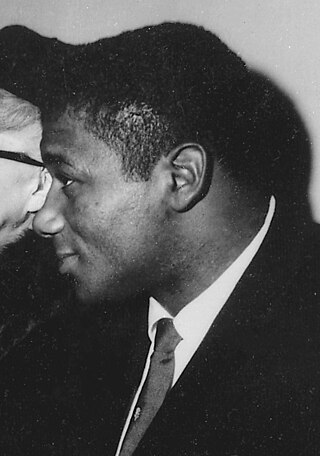
Floyd Patterson was an American professional boxer who competed from 1952 to 1972, and twice reigned as the world heavyweight champion between 1956 and 1962. At the age of 21, he became the youngest boxer in history to win the title, and was also the first heavyweight to regain the title after losing it. As an amateur, he won a gold medal in the middleweight division at the 1952 Summer Olympics. He is recognised as one of the best heavyweights of all time.

James "Buster" Douglas is an American former professional boxer who competed between 1981 and 1999. He reigned as undisputed world heavyweight champion in 1990 after knocking out Mike Tyson. He also defeated other heavyweight world champions Oliver McCall, Trevor Berbick, and Greg Page.
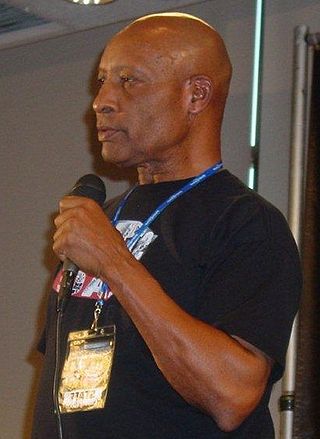
Richard Steele is an American retired boxing referee who was inducted into the International Boxing Hall of Fame.

James Joseph Tunney was an American professional boxer who competed from 1915 to 1928. He held the world heavyweight title from 1926 to 1928, and the American light heavyweight title twice between 1922 and 1923. A highly technical boxer, Tunney had a five-fight light heavyweight rivalry with Harry Greb in which he won three, lost once, and drew once, though many ringside reporters believed Greb should have won the decision in their second meeting. Tunney also knocked out Georges Carpentier and defeated Jack Dempsey twice; first in 1926 and again in 1927. Tunney's successful title defense against Dempsey remains one of the most famous bouts in boxing history and is known as The Long Count Fight. He retired undefeated as a heavyweight after his victory over Tom Heeney in 1928, after which Tunney was named Fighter of the Year by The Ring magazine.
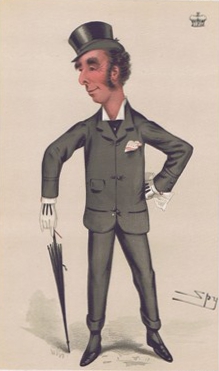
The Marquess of Queensberry Rules, also known as Queensbury Rules, are a code of generally accepted rules in the sport of boxing. Drafted in London in 1865 and published in 1867, they were named so as the 9th Marquess of Queensberry publicly endorsed the code, although they were written by a Welsh sportsman named John Graham Chambers from Llanelli, Carmarthenshire. The code of rules on which modern boxing is based, the Queensberry rules were the first to mandate the use of gloves in boxing.
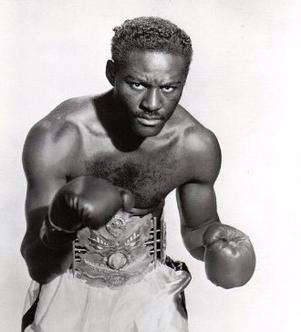
Ezzard Mack Charles, known as the Cincinnati Cobra, was an American professional boxer and World Heavyweight Champion, known for his slick defense and precision. Often regarded as the greatest light heavyweight of all time, Charles defeated numerous Hall of Fame fighters in three different weight classes. Charles retired with a record of 95-25-1. He was posthumously inducted into the International Boxing Hall of Fame in the inaugural class of 1990.

Bare-knuckle boxing is a full-contact combat sport based on punching without any form of padding on the hands. The sport as it is known today originated in 17th-century England and differs from street fighting as it follows an accepted set of rules.
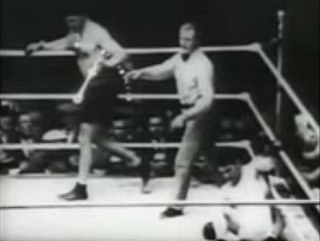
The Long Count Fight, or the Battle of the Long Count, was a professional boxing 10-round rematch between world heavyweight champion Gene Tunney and former champion Jack Dempsey, which Tunney won in a unanimous decision. It took place on September 22, 1927, at Soldier Field in Chicago. "Long Count" is applied to the fight because, when Tunney was knocked down in the seventh round, the count was delayed due to Dempsey's failure to go to and remain in a neutral corner. Whether this "long count" actually affected the outcome remains a subject of debate.
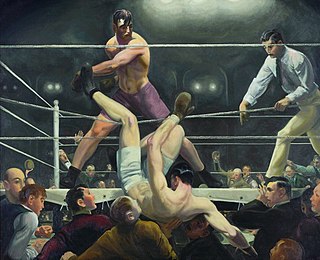
Jack Dempsey vs. Luis Ángel Firpo was a boxing match and one of the most significant events in sports of the era. It was the first time that a Latin American challenged for the world heavyweight title. The bout was named Ring Magazine Fight of the Year for 1923. The painting Dempsey and Firpo by George Bellows, showing Firpo knocking Dempsey out of the ring, is an iconic piece of Americana.

Lucian Bute is a Romanian-Canadian former professional boxer who competed from 2003 to 2017. He held the IBF super-middleweight title from 2007 to 2012, successfully making nine consecutive defenses and reaching a peak ranking of number one in the division by The Ring magazine.
Librado Andrade Ornelas is a Mexican former professional boxer who competed from 1999 to 2013, and challenged three times for a super middleweight world title between 2007 and 2009. His brother Enrique Ornelas is also a professional boxer.

Mike Tyson vs. Buster Douglas, billed as Tyson is Back!, was a professional boxing match that occurred at the Tokyo Dome on February 11, 1990. The then-undefeated, undisputed heavyweight champion Tyson lost by knockout to the 42:1 underdog Douglas. The fight is widely regarded as the biggest upset in boxing history.
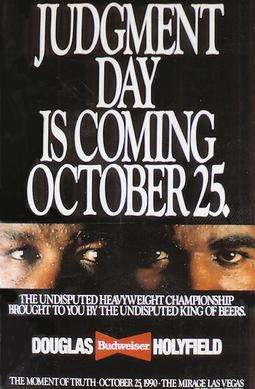
Buster Douglas vs. Evander Holyfield, billed as "The Moment of Truth", was a professional boxing match contested on October 25, 1990, for the WBA, WBC, and IBF heavyweight championships. The bout took place at the Mirage in Paradise, Nevada, USA and saw Douglas making the first defense of the titles he won from Mike Tyson in February 1990.

Jack Dempsey vs. Georges Carpentier was a boxing fight between world heavyweight champion Jack Dempsey and world light-heavyweight champion Georges Carpentier, which was one of the fights named the "Fight of the Century". The bout took place in the United States on Saturday, July 2, 1921, at Boyle's Thirty Acres in Jersey City, New Jersey.
The mandatory eight count, also called a compulsory eight count, is a rule in boxing and kickboxing requiring the referee to give any fighter a count of eight seconds once they have been knocked down by their opponent, and before the fight is allowed to resume. Even if the fighter gets up before the count reaches eight, the referee is required to count to eight before checking if the fighter is able to continue unless they make a judgement call that the fighter cannot continue. The mandatory eight count is a part of the Unified Rules of Boxing as adopted by the Association of Boxing Commissions.
References
- 1 2 "Marquess of Queensberry rules". Bbhof.com. Archived from the original on 22 June 2011. Retrieved 20 September 2011.
- 1 2 "Memorable Long Counts In Boxing". Boxing Insider. 7 December 2008. Retrieved 20 September 2011.
- ↑ "The Long Count". Sports Illustrated . 1997-09-22. Retrieved 2011-09-21.
- 1 2 3 Gustkey, Earl (1990-02-12). "Long Count Spurs Long Delay". Los Angeles Times . Retrieved 2011-09-20.
- 1 2 Anderson, Dave (1990-02-12). "Referee's Count Is What Counts". New York Times . Retrieved 2011-09-20.
- ↑ "'Long Count' charged in title fight". Deseret News . 1966-10-25. Retrieved 2011-09-20.
- ↑ "What They Really Meant to Say Was..." Los Angeles Times . 1990-02-14. Retrieved 2011-09-20.
- ↑ Katz, Michael (2004-05-10). "Featherweights unsatisfied with draw". New York Times . Retrieved 2011-09-20.
- ↑ "Lucian Bute, Librado Andrade, Marlon B. Wright and the Incompetent Timekeeper – A Non-Controversy". EastSideBoxing. Retrieved 20 September 2011.
- ↑ "Bute Defeats Andrade on Long Count". Boxing News 24. 25 October 2008. Retrieved 20 September 2011.
- 1 2 3 Florence, Mal (1990-02-13). "A Long History of Long Counts". Los Angeles Times . Retrieved 2011-09-20.
- ↑ "Films show Ingo got long count". The Modesto Bee . 1961-03-15. Retrieved 2011-09-20.[ dead link ]